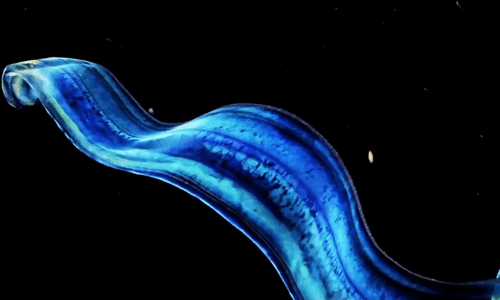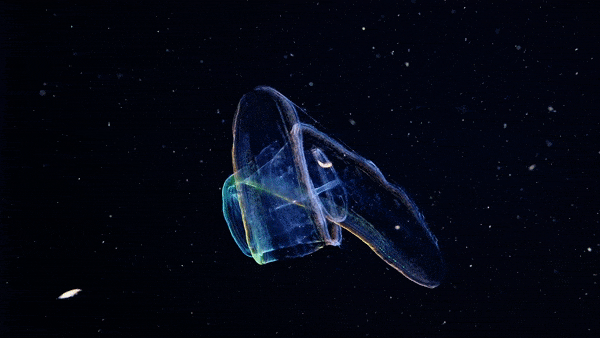M78, Within Orion



M78, Within Orion
More Posts from Ad-astra-affecte-spe and Others









The Venus girdle (Cestum veneris) is a comb jelly in the family Cestidae. The colorless species are transparent when suspended in water, except for their iridescent rows of comb plates. In other words, they majestic as fuck. Love to sea it 🌊

NASA Hubble Space Telescope - The ‘Swan Nebula’
HOW DO ASTRONOMERS DETECT EXOPLANETS AND DETERMINE IF THEY COULD SUPPORT LIFE??
Blog#335
Wednesday, September 27th, 2023
Welcome back,
On March 21, NASA announced the confirmation of the 5,000th planet outside our Solar System. From scorching-hot gas giants nestled near their parent star to rocky worlds that may host water on their surface, there’s a variety for scientists to study.
But finding these strange new worlds is a science in itself.

We’ve only been able to definitively detect planets of any kind for a few decades, and even at that, there are challenges in detecting such a small object at that distance in even the most powerful telescopes.
Inverse spoke with Marie-Eve Naud, an exoplanet researcher and outreach coordinator for the University of Montreal’s Institute for Research on Exoplanets, to tell us more about how astronomers find these worlds and the considerations for each method.

While there are numerous methods, the ones cited below are the most common.
THE TRANSIT METHOD
Astronomers have discovered most exoplanets using the transit method, notably with NASA's Kepler telescope launched in 2009. This method observes planets as they pass in front of their stars, causing a slight dimming of starlight, which photometers can detect. This approach works best in space due to minimal atmospheric interference, favored by missions like ESA's Cheops and NASA's TESS.

To confirm exoplanets, multiple transits are necessary to rule out sunspots or dust as causes of light fluctuations. Typically, two or three transits are required to gather substantial data.
Once a planet is detected, astronomers can estimate its radius, while mass is often determined through the radial velocity method. The combination of mass and radius helps classify a planet as rocky or gaseous, impacting its potential habitability.

Factors like proximity to an active star and radiation levels also affect habitability assessments, as seen with TRAPPIST-1's uncertain habitability despite hosting seven Earth-sized planets in its habitable zone.
RADIAL-VELOCITY METHOD
The radial velocity method is commonly used to discover planets, particularly with instruments like HARPS at the European Southern Observatory’s La Silla 3.6m telescope in Chile.

Planets and stars both orbit around their center of mass. A star with a planet exhibits a slight motion. Multiple planets can lead to complex motions.
This method involves analyzing the star's spectrum. When the star approaches, its light shifts towards red due to compression. When it moves away, the light shifts towards blue.

The planet's motion slightly affects the star's spectrum, creating a "barcode" of the star.
The first detection of a planet around a Sun-like star using this method was in 1995 when Didier Queloz and Michel Mayor found 51 Pegasi b. Prior to that, in 1992, planets were detected around pulsar PSR B1257+12, using changes in the pulsar's radio signal. This showcases the diverse scientific approaches to discovering distant worlds.
Originally published on www.inverse.com
COMING UP!!
(Saturday, September 30th, 2023)
"WHAT IS THE BLOCK THEORY??"

Neptune's rings & moon Triton © Voyager 2

JWST Breaks New Ground - Twice
Between the orbit of Jupiter and Saturn lies a small 151Km wide asteroid/minor planet called Chariklo. This left over from our early solar system hasn't been imaged before, and was too small for JWST to image too, however, the JWST team were waiting for an opportunity to do some science.
Because of it's size, the only way they could do this was if a star passed directly behind the asteroid from the location of JWST, so it was put on a watch list, and in October, this is exactly what happened.
This is the first time any telescope has been able to see an object it wouldn't ordinarily be able to image, simply due to a chance occultation, so marks a first and interesting method for looking at some of these far off objects.

The asteroid happens also happens to sport a small ring of debris, and as the star didn't quite make a direct occultation, it did pass through the debris rings, being picked up twice as it passed through.

But what really was impressive was the second bit of data gathered, as the occultation occurred JWST was able to record the composition, detecting water ice.
Up until now, it had been assumed that the asteroid would have a significant water ice component, but this is the first time anybody has been able to take some real data from it.
Objects like Chariklo tell us so much about the early solar system, how Earth got it's water, and what other systems and exoplanets are likely made from.

Setting Sail to Travel Through Space: 5 Things to Know about our New Mission
Our Advanced Composite Solar Sail System will launch aboard Rocket Lab’s Electron rocket from the company’s Launch Complex 1 in Māhia, New Zealand no earlier than April 23, at 6 p.m. EDT. This mission will demonstrate the use of innovative materials and structures to deploy a next-generation solar sail from a CubeSat in low Earth orbit.
Here are five things to know about this upcoming mission:
1. Sailing on Sunshine
Solar sails use the pressure of sunlight for propulsion much like sailboats harness the wind, eliminating the need for rocket fuel after the spacecraft has launched. If all goes according to plan, this technology demonstration will help us test how the solar sail shape and design work in different orbits.

2. Small Package, Big Impact
The Advanced Composite Solar Sail System spacecraft is a CubeSat the size of a microwave, but when the package inside is fully unfurled, it will measure about 860 square feet (80 square meters) which is about the size of six parking spots. Once fully deployed, it will be the biggest, functional solar sail system – capable of controlled propulsion maneuvers – to be tested in space.

3. Second NASA Solar Sail in Space
If successful, the Advanced Composite Solar Sail System will be the second NASA solar sail to deploy in space, and not only will it be much larger, but this system will also test navigation capabilities to change the spacecraft’s orbit. This will help us gather data for future missions with even larger sails.

4. BOOM: Stronger, Lighter Booms
Just like a sailboat mast supports its cloth sails, a solar sail has support beams called booms that provide structure. The Advanced Composite Solar Sail System mission’s primary objective is to deploy a new type of boom. These booms are made from flexible polymer and carbon fiber materials that are stiffer and 75% lighter than previous boom designs. They can also be flattened and rolled like a tape measure. Two booms spanning the diagonal of the square (23 feet or about 7 meters in length) could be rolled up and fit into the palm of your hand!

5. It’s a bird...it’s a plane...it’s our solar sail!
About one to two months after launch, the Advanced Composite Solar Sail System spacecraft will deploy its booms and unfurl its solar sail. Because of its large size and reflective material, the spacecraft may be visible from Earth with the naked eye if the lighting conditions and orientation are just right!
To learn more about this mission that will inform future space travel and expand our understanding of our Sun and solar system, visit https://www.nasa.gov/mission/acs3/.
Make sure to follow us on Tumblr for your regular dose of space!



The 2nd full moon of August 2023 l Rami Ammoun
-
 carlottaragazzaloveeur reblogged this · 1 month ago
carlottaragazzaloveeur reblogged this · 1 month ago -
 carlottaragazzaloveeur liked this · 1 month ago
carlottaragazzaloveeur liked this · 1 month ago -
 modpodged reblogged this · 2 months ago
modpodged reblogged this · 2 months ago -
 knightvelvet reblogged this · 2 months ago
knightvelvet reblogged this · 2 months ago -
 oh-nostalgiaa liked this · 2 months ago
oh-nostalgiaa liked this · 2 months ago -
 snakyak liked this · 2 months ago
snakyak liked this · 2 months ago -
 feaches liked this · 2 months ago
feaches liked this · 2 months ago -
 captastra reblogged this · 2 months ago
captastra reblogged this · 2 months ago -
 nerdishnerd reblogged this · 3 months ago
nerdishnerd reblogged this · 3 months ago -
 pumpkinphrog liked this · 3 months ago
pumpkinphrog liked this · 3 months ago -
 tonycairo liked this · 4 months ago
tonycairo liked this · 4 months ago -
 feastofvsenses reblogged this · 4 months ago
feastofvsenses reblogged this · 4 months ago -
 gardenwithin liked this · 4 months ago
gardenwithin liked this · 4 months ago -
 everythingsokaynow reblogged this · 4 months ago
everythingsokaynow reblogged this · 4 months ago -
 lingaystics reblogged this · 4 months ago
lingaystics reblogged this · 4 months ago -
 662607015 liked this · 4 months ago
662607015 liked this · 4 months ago -
 crossbills reblogged this · 4 months ago
crossbills reblogged this · 4 months ago -
 dominic-isaiah liked this · 4 months ago
dominic-isaiah liked this · 4 months ago -
 httpodddel reblogged this · 4 months ago
httpodddel reblogged this · 4 months ago -
 httpodddel liked this · 4 months ago
httpodddel liked this · 4 months ago -
 coconutdrip liked this · 5 months ago
coconutdrip liked this · 5 months ago -
 plasmoidal reblogged this · 5 months ago
plasmoidal reblogged this · 5 months ago -
 wellgoodluckbabe reblogged this · 5 months ago
wellgoodluckbabe reblogged this · 5 months ago -
 minuano reblogged this · 5 months ago
minuano reblogged this · 5 months ago -
 ghostowlattic liked this · 5 months ago
ghostowlattic liked this · 5 months ago -
 haml3t reblogged this · 5 months ago
haml3t reblogged this · 5 months ago -
 luminishenca reblogged this · 5 months ago
luminishenca reblogged this · 5 months ago -
 astralportalmultidimensional reblogged this · 5 months ago
astralportalmultidimensional reblogged this · 5 months ago -
 astralportalmultidimensional liked this · 5 months ago
astralportalmultidimensional liked this · 5 months ago -
 pisi-yiyici-nomnom-hmailnoktakom reblogged this · 5 months ago
pisi-yiyici-nomnom-hmailnoktakom reblogged this · 5 months ago -
 selenaxdawn reblogged this · 5 months ago
selenaxdawn reblogged this · 5 months ago -
 retailther4py liked this · 5 months ago
retailther4py liked this · 5 months ago -
 khv liked this · 5 months ago
khv liked this · 5 months ago -
 inlibris-libertas liked this · 5 months ago
inlibris-libertas liked this · 5 months ago -
 murd3rmittens liked this · 5 months ago
murd3rmittens liked this · 5 months ago -
 seasons-in-hell liked this · 5 months ago
seasons-in-hell liked this · 5 months ago -
 mintsweater liked this · 5 months ago
mintsweater liked this · 5 months ago -
 prefiro-pepsi reblogged this · 5 months ago
prefiro-pepsi reblogged this · 5 months ago -
 re-ta-rd-ed-po-ta-to liked this · 5 months ago
re-ta-rd-ed-po-ta-to liked this · 5 months ago -
 wiifittrainerinyellow liked this · 5 months ago
wiifittrainerinyellow liked this · 5 months ago -
 futuristicwonderlandgladiator liked this · 5 months ago
futuristicwonderlandgladiator liked this · 5 months ago -
 moodyhoney liked this · 5 months ago
moodyhoney liked this · 5 months ago -
 amber0130 liked this · 5 months ago
amber0130 liked this · 5 months ago

★•Astronomy, Physics, and Aerospace•★ Original and Reblogged Content curated by a NASA Solar System Ambassador
204 posts



